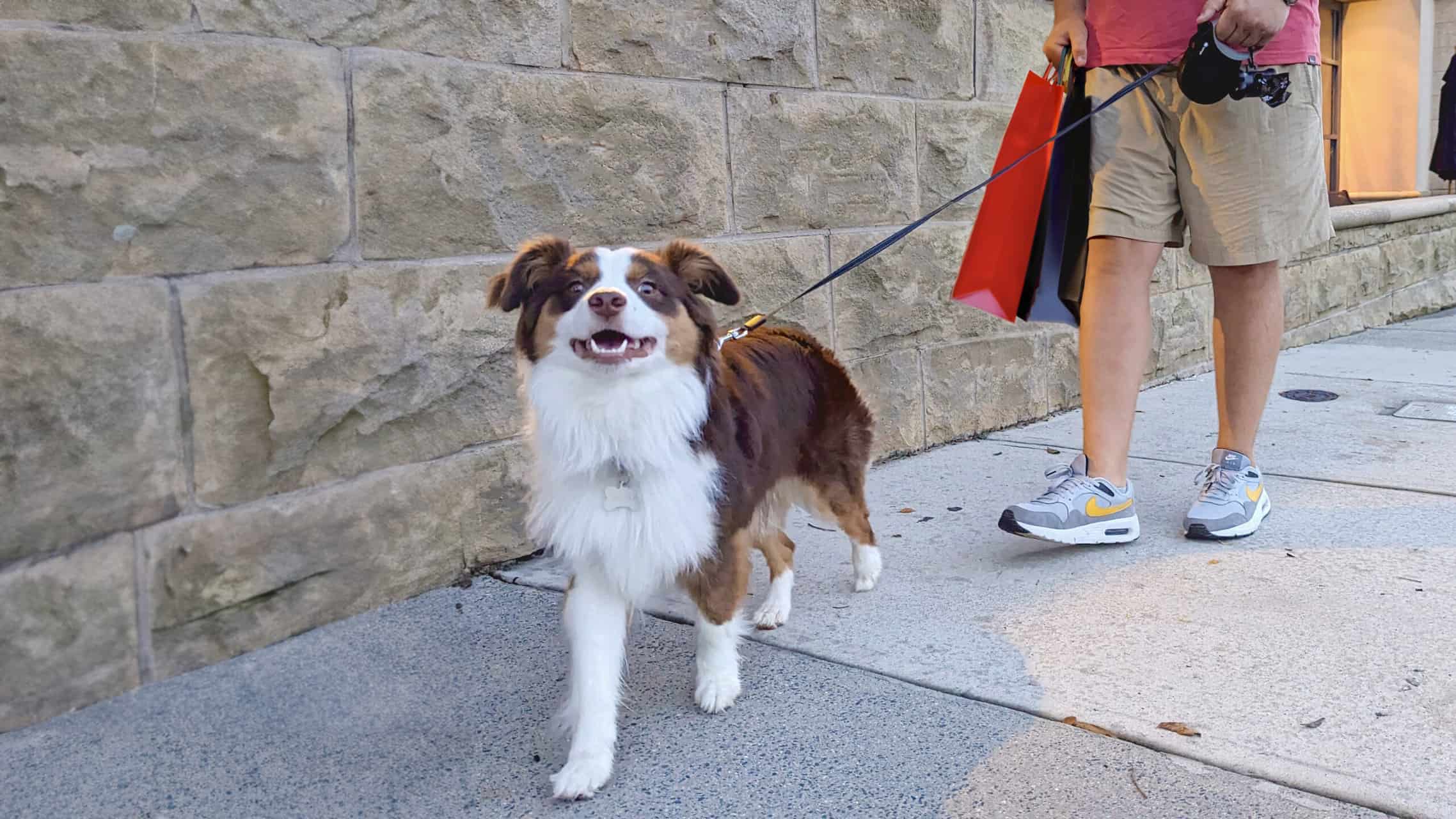It’s a sunny Saturday afternoon. After an exhilarating drive with the windows fully down, you hop out of the car. Windblown, you make your way toward a large glass door and walk through. Instantly, smells overwhelm you. They are unrecognizable, and you can’t decide if you like them, but you remain intrigued. All around you, strange sounds occur—from languages you do not understand to an almost constant beep beep sound. Seriously what is that?! You cautiously move forward, staring at giant shelves, giant tables, giant … everything. Curiously, you sniff and quickly lick the floor to see if it can provide some context to this bizarre and unfamiliar place.
A SURGE IN PET OWNERSHIP
This isn’t some weird dream. It is a real-life scenario illustrating what our pets can experience when they come with us to any retail space. Pet ownership has surged in recent years. Did you know that 66% of US households today own a pet and that more than ¾ of pet owners acquired pets during the pandemic? Pets are no longer merely seen as companions—they have become an integral part of the family, and numerous studies have shown that they profoundly enhance the lives of their owners. From improving mental health to encouraging regular exercise, pets have become essential to consumers’ daily lives.
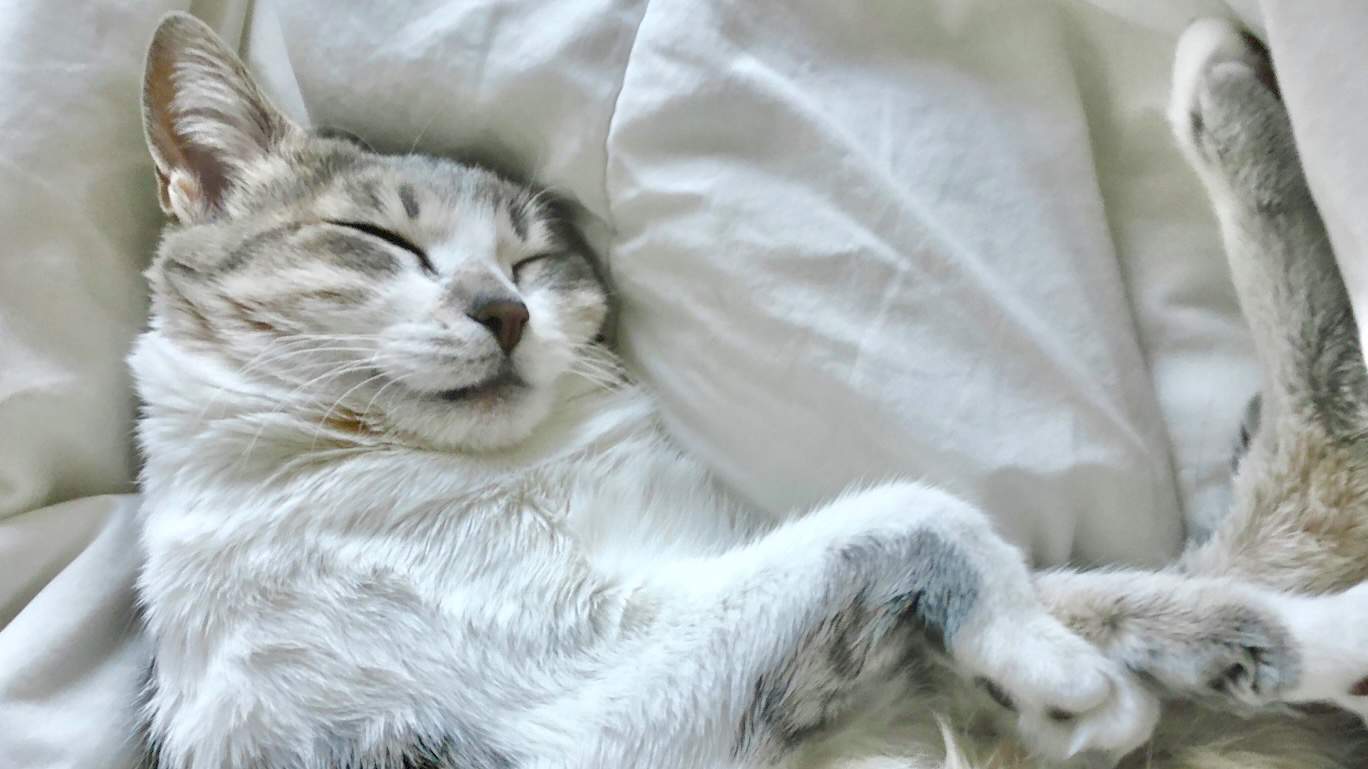
THE NEED FOR PET-FRIENDLY DESIGN
Given the growing statistics on pet ownership, designers must address this trend and create places that cater to these new family members and their relationships with their human consumers. The potential for pet-friendly retail spaces is expanding dramatically, ranging from veterinary clinics and doggie daycares to retail outlets focused on animal diet, nutrition, fitness, socialization, education, and technology. Even entertainment spots like breweries, restaurants, and concert venues are finding ways to include four-legged clientele.
Perhaps it’s time to take a step back and approach the design of these spaces from a fresh perspective. How can we enhance the overall experience for pets and their owners? What innovative ideas could we implement to make these spaces exceptional? How can we ensure the space is designed with all visitors in mind?
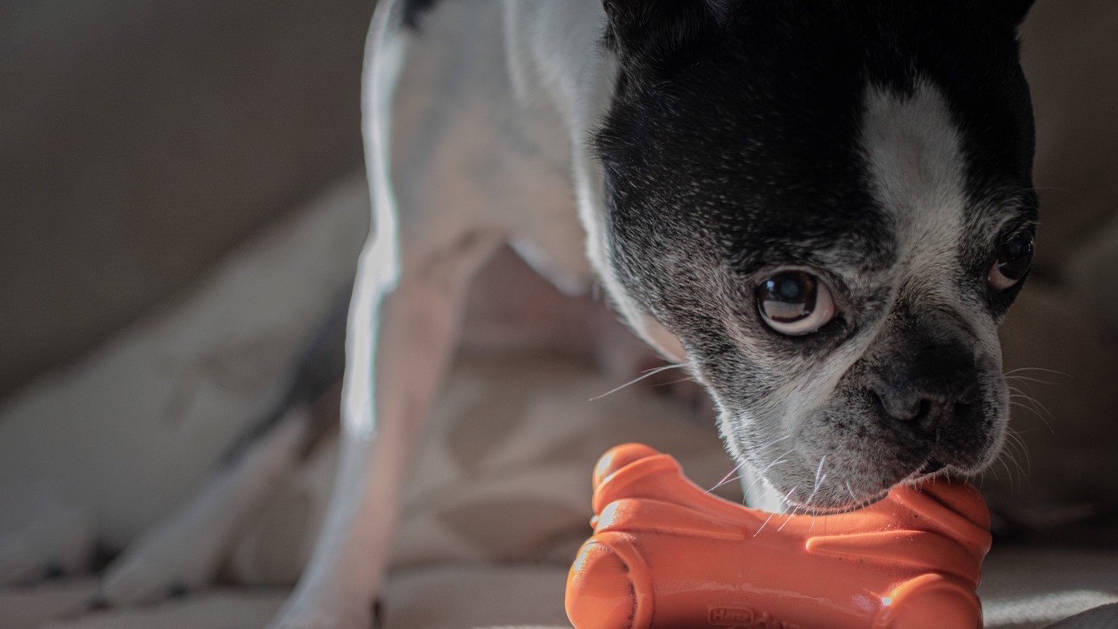
DESIGNING AROUND THE SENSES
In this article, I will focus on cats and dogs as they are the most common pets. As a pet owner and consumer, I have specific needs and expectations for the places I visit. But what about my pet? Unlike humans, pets typically don’t have much control over the spaces they encounter—their owner leads them. Therefore, they cannot leave freely when an experience becomes uncomfortable. When evaluating a space’s potential for a positive or negative experience dogs and cats use their senses like humans. However, they do prioritize them differently.
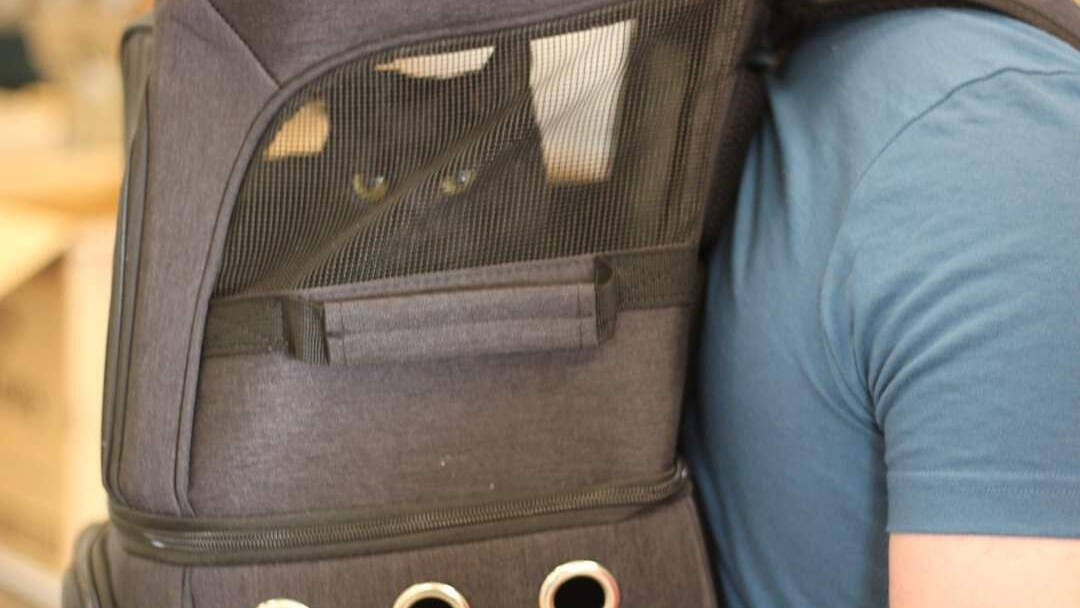
SMELL
Smell is the first sense animals use to understand the world around them. Unlike humans, who usually rely on sight first, animals likely smell a space before they even enter it. Their brains are much more adept at processing smells compared to humans. For instance, the area in dogs’ brains that analyzes scents is 40 times larger than in human brains, and a cat’s sense of smell is 14 times better than that of humans. Designing spaces without considering this remarkable sense means missing an opportunity to create a positive impact.
Designing for a Pet’s Sense of Smell:
- Specify products in the design that don’t require harsh chemicals for cleaning or off gas chemicals.
- Design the mechanical system with more air movement to help flush out smells.
- Allow for operable windows and natural ventilation.
- Provide natural plants to filter the air and add familiar natural scents to the environment.
- Provide changeable graphics with applied scent to direct the animals around the space.
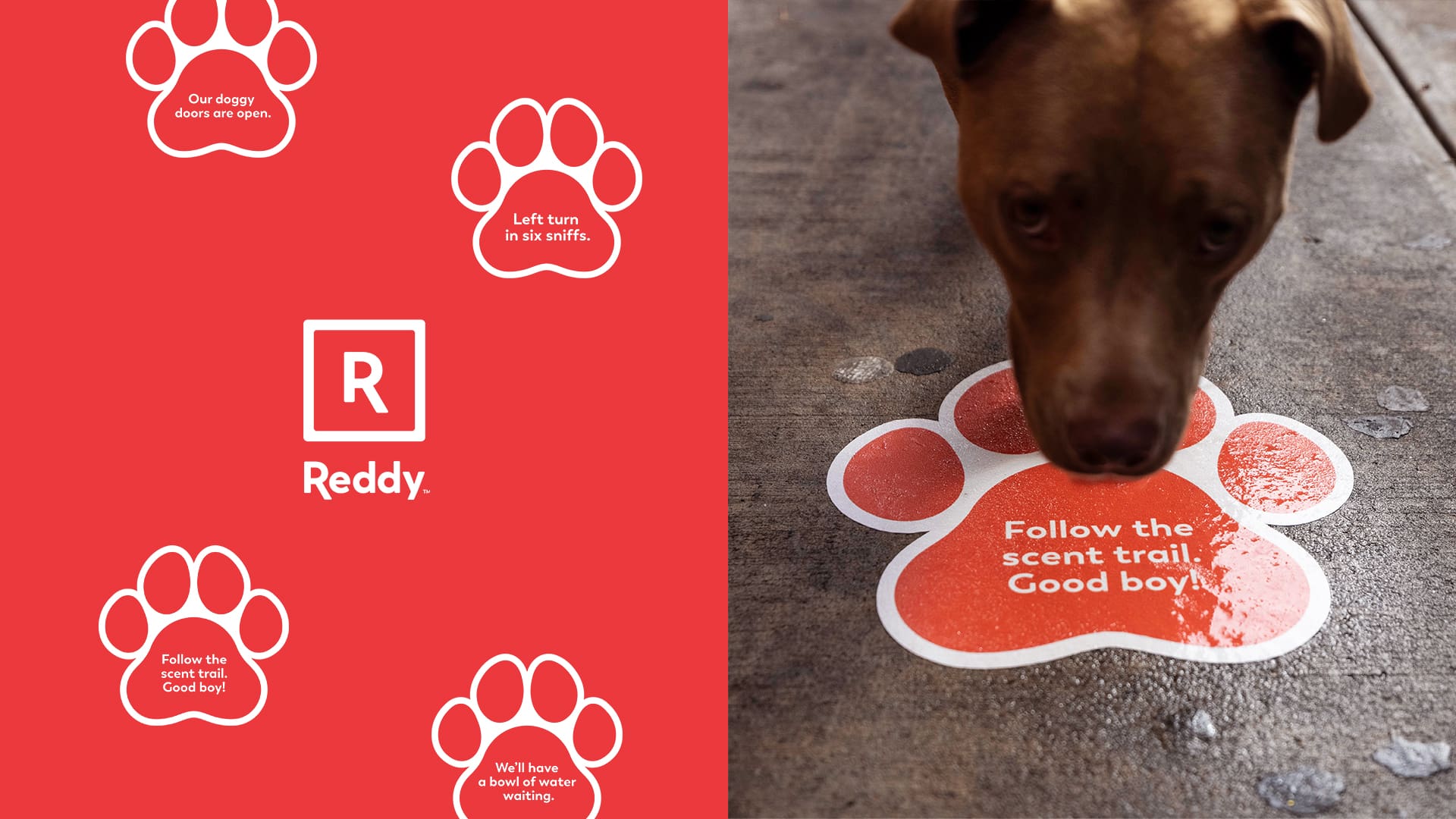
SOUND
While sound may serve as a secondary sense for humans, dogs and cats heavily rely on it. Dogs possess 15 muscles in their ears, enabling them to move each ear independently, while cats have 27 ear muscles. Additionally, animals can hear frequencies that are beyond human perception. Therefore, when designing spaces for animals, it is essential to consider the sounds present and how they interact within the environment. Sound plays a significant role in their experience and can contribute to their comfort in the space.
Designing for a Pet’s Sense of Hearing:
- Provide natural sounds and/or music that is structured for animal hearing (key, tempo, chord progression, etc.).
- Design equipment so that there aren’t abrupt on and off patterns.
- Provide acoustical barriers between spaces.
TASTE
Considering how a space tastes may seem hard to imagine, but for animals, that’s how they experience the world. Taste is a significant part of their everyday life, and they don’t hesitate to explore by sticking their tongues out. When choosing materials for a pet-friendly space, we must assume they will get licked or risk being naive about who that space is there to serve. Remember, this will always be a multi-sensory environment and should be designed as such.
Designing for a Pet’s Sense of Taste:
- Like smell, specify floor and wall products that don’t require harsh chemicals for cleaning.
- Provide changeable, lickable elements throughout the space to provide interest and encourage safe exploration.
- Provide DIY cleaning items so that messes can be resolved quickly.
- Provide treats to encourage a positive memory of the space.

TOUCH
Addressing touch for animals involves two aspects: their feet and their nose. Their feet serve as their primary touch, standing on surfaces like humans. However, since animals don’t wear shoes, their surface interaction becomes more personal. Cats tend to be analytical in their approach to surfaces. They cautiously test and feel what they are standing on before fully engaging with the space. The tactile experience significantly influences their perception of the environment.
When considering dogs, they are less cautious but may have traction issues on certain surfaces. The inability to make a quick getaway can contribute to their anxiety in unfamiliar places. What they stand on impacts their overall experience.
The secondary touch to consider for animals is their nose. As we discussed earlier, their sense of smell is crucial to them, bringing their nose up close to items when necessary. They assess spaces by sniffing and feeling with their nose simultaneously. Therefore, when designing retail spaces for animals, we must be mindful that their noses actively feel their way through the environment, which can quickly influence their experience.
Designing for a Pet’s Sense of Touch:
- Specify floor surfaces that provide good traction for pets—especially when wet.
- Choose patterns that are understandable as “ground.” A mirrored surface can confuse an animal.
- Investigate temperature of surfaces.
SIGHT
When considering how pets visually experience a space, it’s crucial to get on their level—literally. The average human eye level is around five feet, but animals have a significantly lower point of view. Try getting on your hands and knees and moving around your house; you’ll notice how different your spaces appear from this change in eye level.
Another factor to consider is the colors used in these spaces. Most animals don’t see colors the same way humans do. While they aren’t colorblind, their perception of colors may differ, and they may not even notice some colors. Their sight excels in spotting movement, though. A space with a lot of activity could force an animal to be on high alert, as they can’t easily avoid noticing even subtle movements.
To better illustrate this, think of the scene from the movie Up, where Doug (a talking dog) stops mid-sentence to uncontrollably shift his attention to a squirrel before returning to what he was doing or saying. Understanding the differences in their eyesight can help guide the design elements within these spaces.
Designing for a Pet’s Sense of Sight:
- Consider color combinations that provide depth of tones.
- Minimize sporadic movement that is within a lower cone of vision.
- Consider the line of sight when designing with visual interest.
- Elements up to 3-4’ create barriers within the space, similar to walls for humans.
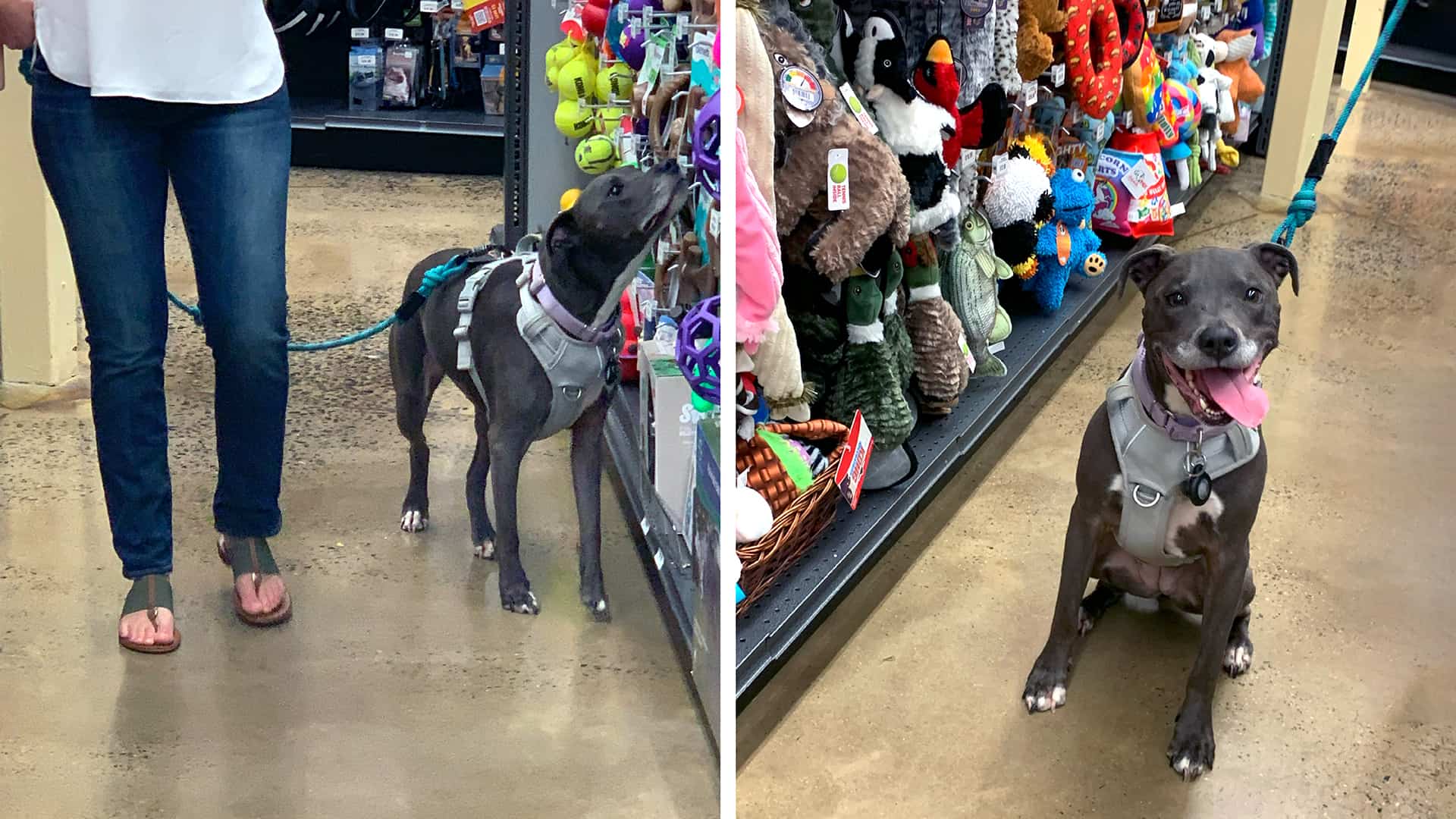
IN SUMMARY
Look at any area from a pet’s point of view, and you will see things very differently compared to how humans see it. Whether good or bad, intentional or accidental, design elements can greatly impact how pets experience a space. With more and more people having and loving pets, it’s essential to consider ways to create inclusive and responsive pet-friendly retail environments.
